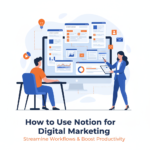
100 Digital Marketing Terms
100 digital marketing terms that are commonly used in the industry:
SEO (Search Engine Optimization):
- The practice of optimizing web content to improve its visibility in search engine results.
SEM (Search Engine Marketing):
- The broader term that encompasses SEO and paid advertising to increase visibility in search engine results.
PPC (Pay-Per-Click):
- An online advertising model where advertisers pay a fee each time their ad is clicked.
CTR (Click-Through Rate):
- The percentage of people who click on an ad after seeing it.
Impressions:
- The number of times an ad is displayed.
Conversion Rate:
- The percentage of users who take a desired action (e.g., make a purchase or sign up) after clicking on an ad.
Landing Page:
- A specific web page designed for a marketing or advertising campaign, often focused on a particular product or service.
Bounce Rate:
- The percentage of visitors who navigate away from a site after viewing only one page.
CMS (Content Management System):
- A software application that allows users to create, edit, and manage digital content.
Algorithm:
- A set of rules followed by a computer program to solve specific problems or perform a task.
CTR (Customer Relationship Management):
- A strategy for managing a company’s interactions with customers, often using software.
Churn Rate:
- The percentage of subscribers or customers who stop using a product or service during a given time period.
A/B Testing:
- Comparing two versions of a webpage or app to determine which one performs better.
KPI (Key Performance Indicator):
- A measurable value that demonstrates how effectively a company is achieving key business objectives.
ROI (Return on Investment):
- A measure of the profitability of an investment.
B2B (Business-to-Business):
- Transactions between businesses.
B2C (Business-to-Consumer):
- Transactions between businesses and individual consumers.
UGC (User-Generated Content):
- Content created by the audience rather than the brand.
CTA (Call to Action):
- A prompt that encourages the audience to take a specific action.
Inbound Marketing:
- Marketing activities that bring visitors in, rather than relying on outbound marketing.
Outbound Marketing:
- Traditional marketing where a company initiates the conversation and sends its message to an audience.
SERP (Search Engine Results Page):
- The page displayed by search engines in response to a query.
Algorithm Update:
- Changes made to a search engine’s algorithm, affecting how it ranks content.
Content Marketing:
- Creating and distributing valuable content to attract a target audience.
Lead Generation:
- The process of attracting and converting potential customers into leads.
CRM (Customer Relationship Management):
- A system for managing a company’s interactions with current and future customers.
Drip Campaign:
- A series of automated emails sent to a specific audience over time.
Domain Authority:
- A search engine ranking score that predicts a website’s ability to rank on search engine results pages.
SSL (Secure Sockets Layer):
- A protocol for establishing secure communication links between web servers and browsers.
Backlink:
- A link from one website to another.
Google Analytics:
- A web analytics service offered by Google that tracks and reports website traffic.
Long-Tail Keywords:
- More specific and less common keywords that users are more likely to use when they’re closer to a point-of-purchase.
Meta Tags:
- HTML tags that provide information about a web page.
CTR (Content Curation):
- The process of discovering, gathering, and presenting digital content.
Podcast:
- A digital audio or video file that is episodic, downloadable, and available for subscription.
Viral Marketing:
- A strategy that encourages individuals to share a marketing message widely.
Native Advertising:
- Advertisements that match the form and function of the platform on which they appear.
Geotargeting:
- Delivering content to a user based on their geographic location.
Engagement Rate:
- A metric that measures the level of interaction users have with a piece of content.
Geotargeting:
- Delivering content to a user based on their geographic location.
Geotargeting:
- Delivering content to a user based on their geographic location.
Algorithm:
- A set of rules followed by a computer program to solve specific problems or perform a task.
UGC (User-Generated Content):
- Content created by the audience rather than the brand.
CTA (Call to Action):
- A prompt that encourages the audience to take a specific action.
Inbound Marketing:
- Marketing activities that bring visitors in, rather than relying on outbound marketing.
Outbound Marketing:
- Traditional marketing where a company initiates the conversation and sends its message to an audience.
SERP (Search Engine Results Page):
- The page displayed by search engines in response to a query.
Algorithm Update:
- Changes made to a search engine’s algorithm, affecting how it ranks content.
Content Marketing:
- Creating and distributing valuable content to attract a target audience.
Lead Generation:
- The process of attracting and converting potential customers into leads.
CRM (Customer Relationship Management):
- A system for managing a company’s interactions with current and future customers.
Drip Campaign:
- A series of automated emails sent to a specific audience over time.
Domain Authority:
- A search engine ranking score that predicts a website’s ability to rank on search engine results pages.
SSL (Secure Sockets Layer):
- A protocol for establishing secure communication links between web servers and browsers.
Backlink:
- A link from one website to another.
Google Analytics:
- A web analytics service offered by Google that tracks and reports website traffic.
Long-Tail Keywords:
- More specific and less common keywords that users are more likely to use when they’re closer to a point-of-purchase.
Meta Tags:
- HTML tags that provide information about a web page.
Content Curation:
- The process of discovering, gathering, and presenting digital content.
Podcast:
- A digital audio or video file that is episodic, downloadable, and available for subscription.
Viral Marketing:
- A strategy that encourages individuals to share a marketing message widely.
Native Advertising:
- Advertisements that match the form and function of the platform on which they appear.
Geotargeting:
- Delivering content to a user based on their geographic location.
Engagement Rate:
- A metric that measures the level of interaction users have with a piece of content.
Lead Nurturing:
- Building relationships with potential customers through various marketing strategies.
Heatmap:
- A visual representation of data where values are depicted by color.
White Hat SEO:
- Ethical SEO practices that comply with search engine guidelines.
Black Hat SEO:
- Unethical SEO practices that violate search engine guidelines.
Content Syndication:
- Distributing content to third-party websites to reach a broader audience.
Influencer Marketing:
- Collaborating with influential individuals to promote a product or service.
Affiliate Marketing:
- Earning a commission by promoting other people’s (or company’s) products.
Lead Magnet:
- Something offered to potential customers in exchange for their contact information.
B2B2C (Business-to-Business-to-Consumer):
- A business model where a company sells to another business, which, in turn, sells to consumers.
Customer Segmentation:
- Dividing customers into groups based on characteristics or behavior.
Chatbot:
- A computer program designed to simulate conversation with human users.
Dark Social:
- The sharing of content through private channels that are difficult to track.
Evergreen Content:
- Content that remains relevant and useful over an extended period.
Dynamic Content:
- Content that changes based on the user’s behavior, preferences, or other data.
Exit Intent Popup:
- A popup that appears when a user is about to leave a website.
Algorithmic Timeline:
- The order in which content is displayed on social media feeds, determined by an algorithm.
Filter Bubble:
- A state of intellectual isolation resulting from personalized searches when a website algorithm selectively guesses what information a user would like to see.
Gamification:
- Applying game elements to non-game contexts to encourage user engagement.
Infographic:
- A visual representation of information or data.
KPI (Key Performance Indicator):
- A measurable value that indicates the success of a campaign or strategy.
LTV (Lifetime Value):
- The predicted net profit attributed to the entire future relationship with a customer.
Micro-Influencer:
- An influencer with a smaller but highly engaged following in a specific niche.
Omnichannel Marketing:
- Creating a seamless and consistent experience for customers across various channels.
Personalization:
- Tailoring content or experiences to individual user preferences.
Rich Snippet:
- Additional data displayed in search engine results to provide more information.
SaaS (Software as a Service):
- A software distribution model where applications are hosted by a third-party provider and made available to customers over the internet.
Target Audience:
- The specific group of people a marketing campaign is intended to reach.
Vlog (Video Blog):
- A blog in which the postings are primarily in video form.
Whitespace:
- The empty space between design elements on a webpage.
404 Error:
- An HTTP response code indicating that the server could not find the requested page.
Algorithmic Penalty:
- A negative impact on a website’s search ranking due to a search engine algorithm update.
Anchor Text:
- The visible, clickable text in a hyperlink.
Canonical URL:
- The preferred URL for a page that can be used to eliminate duplicate content issues.
Dofollow Link:
- A hyperlink that passes authority from one page to another.
Ephemeral Content:
- Content that is only accessible for a brief period, often 24 hours.
Landing Page Optimization: – The process of improving elements on a website to increase conversions.
Author



